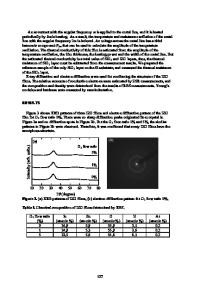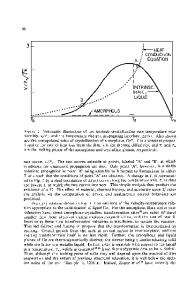Crystallization of Amorphous Silicon-Aluminum thin Films: IN-SITU Observation and Thermal Analysis.
- PDF / 4,900,925 Bytes
- 6 Pages / 420.48 x 639 pts Page_size
- 112 Downloads / 302 Views
CRYSTALLIZATION OF AMORPHOUS SILICON-ALUMINUM THIN FILMS: IN-SITU OBSERVATION AND THERMAL ANALYSIS. Toyohiko J. Konno and Robert Sinclair Department of Materials Science and Engineering, Stanford University, Stanford, CA 94305
ABSTRACT The crystallization of sputter-deposited Si/Al amorphous alloys was examined by transmission electron microscopy (TEM) and differential scanning calorimetry (DSC). In-situ high-resolution TEM reveals the existence of an Al layer between the amorphous matrix and the growing crystalline phase. The activation energy for the growth is about 1.2eV, roughly corresponding to the activation energy of Si diffusion in Al. These two observations support the view that a crystallization mechanism, in which an Al buffer layer provides the shortest reaction path, is responsible for the reaction. The product microstructure exhibits secondary crystallization at a higher temperature. INTRODUCTION The crystallization of an amorphous alloy differs significantly from that of an elemental amorphous phase since it often involves the decomposition of the constituents into two or more stable phases. According to Herold and Koster, the crystallization can proceed, depending on the initial composition, by (a) polymorphous crystallization, (b) primary crystallization, and (c) eutectic crystallization.[1] In SilxAlx alloy systems, mechanism (a) has been reported to be responsible for the crystallization of alloys with x
Data Loading...




